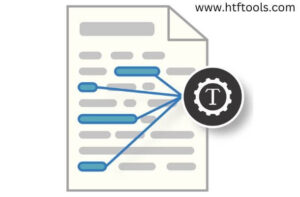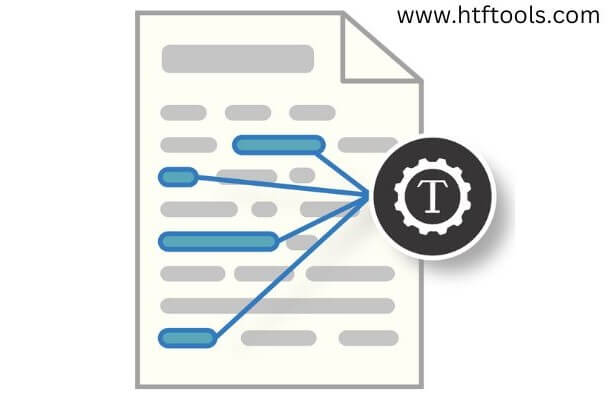Top 6 Tools for Text Mastery in Adobe InDesign

Introduction
In the Top 6 Tools for Text Mastery in Adobe InDesign this blog, we will see the master layout design type. Thus, in layout design, type is the most important medium of your game. So sure, images are also a big deal but it’s easy to put all your stock into the color and fun of the image when it comes to creative manipulation text that can make your creation attractive.
There is also a lot to consider. Through which you need to be aware of everything including font selection, typeface combinations, paragraph construction, featured images, and type relationship with white space. Thus to help you face all these specific challenges, InDesign has come up with a toolbox of simple tricks to help you do it so effectively.
1. Master the typeface menu:-
Looking at this tool, one of the best new features of Adobe’s Creative Cloud version of InDesign is the upgraded typeface menu. So it provides the ability to template both the specific typeface you are looking for as well as the typeface in your document. Thus, to access the menu, click on the Type (T) tool and then move your cursor to the top left corner and make sure that the “A” button on it is highlighted opposite to “P”. Which are paragraph formatting restrictions and which we will use later.
Sampling Typefaces:-
A brighter addition to this one argument is how your typeface possibilities look in action. So the ability to see it, without having to choose someone to preview it, going back and forth from the menu all the time. This is to use the up and down arrows to highlight the text you want to sample and to scroll across different typefaces. This way it will not choose the font for you, so only when you have settled on one, click on it to use it in your document.
2. Sync fonts with Typekit:-
This typekit tool is an easy way to find a new typeface without having to worry about tracking licensing, as all of this has been researched. As well it is also on-site for you. Thus the program comes as part of a subscription to Adobe Creative Cloud. Which makes it painfully easy to legally download and add fonts to your work. This way you can access the site either by clicking on the option given above in the type menu or by typing in the main menu and adding fonts from the typekit.
To browse through the fonts, you have to go to TypeKit. So the classification is Serif / Sans Serif / Slab Serif, etc. Thus it is used for web vs desktop. The recommended paragraph is for vs. heading. Its properties include weight, width, contrast, etc. Thus click on the font family you want. Also, review the typeface options and click “Sync”. So that OpenFont will easily sync to your open design.
3. Wrap text around an image:-
Looking at this tool, at this point we will go to work directly with the image from the text tool. So click on the picture you want to work with, and the suggested text wrap options with the orange arrow above. These are your options. This no-text wrap text will be layered above or below the image.
So wrapping around the bounding box In the picture above, the text will wrap around this picture. Thus there is not much space between the edge of the image and the text and there are many ways to get around this. Thus one of the options is to create a border on the image before you import it into InDesign. So if you want to work extensively with the image in the layout, this is not a very convenient option.
So another way to go is to use the stroke button. If we look, the image indicated by the orange arrow appears in the toolbar. Thus the transparent option in the picture above is chosen for both fill and stroke, but you just have to change the color of the stroke to whatever your background color is which works to increase the level of the point to your desired thickness. As well as the negative here is that adding a stroke can partially blur the image, the stroke goes along the border of the image as well.
I think that making a rectangle similar to the background and putting it behind the image to make a border, the third option is the easiest to use. So does not intrude into the image, and is easily editable when you play with the layout.
4. Create columns:-
As you can see in this tool, columns are as simple as clicking a button. So navigate to the column column above. Thus it is also in the text toolbar if you need it. Through which do you want how many columns? Also, enter the number for it and adjust the distance between the columns in the following boxes.
5. Link text boxes:-
As you can see in this tool, InDesign has a fantastic feature. Which allows you to link text links. This allows you to easily edit most of the text in multiple b’s for the author or article on large pages. Thus the text box above contains more text than there is space to display it. As a result, there is a small red cross in the box on the bottom right of the box. So all you have to do is click on these clicks and you are clicking on the unplastered text.
Which allows you to paste it into a new text box created earlier. So when the text is highlighted you can also draw a text drawbox exactly where you want on the page. As well as the text will automatically fill in the blanks.
6. Create a drop cap:-
The drop cap is when you first see a large image or word below in the main body of a text. So the paragraph points to the drop cap button in the Formatting toolbar. Which lets you decide how many lines you want the drop cap to be high. So next to that button, you can just choose how many characters you want to highlight from the first letter to the word and then more if you like.
Thanks for reading Top 6 Tools for Text Mastery in Adobe InDesign, I hope you enjoyed reading this and got to know it.




